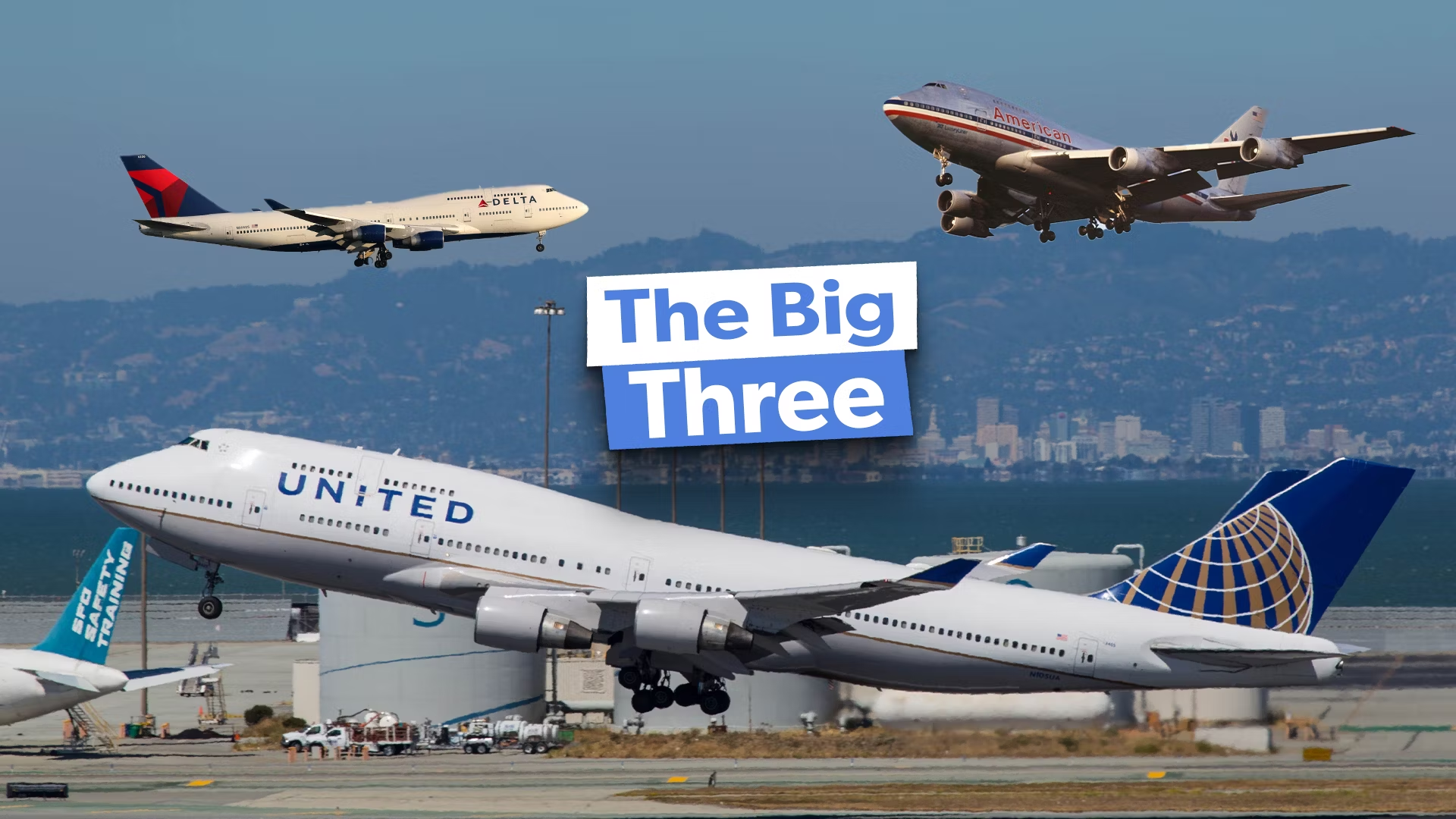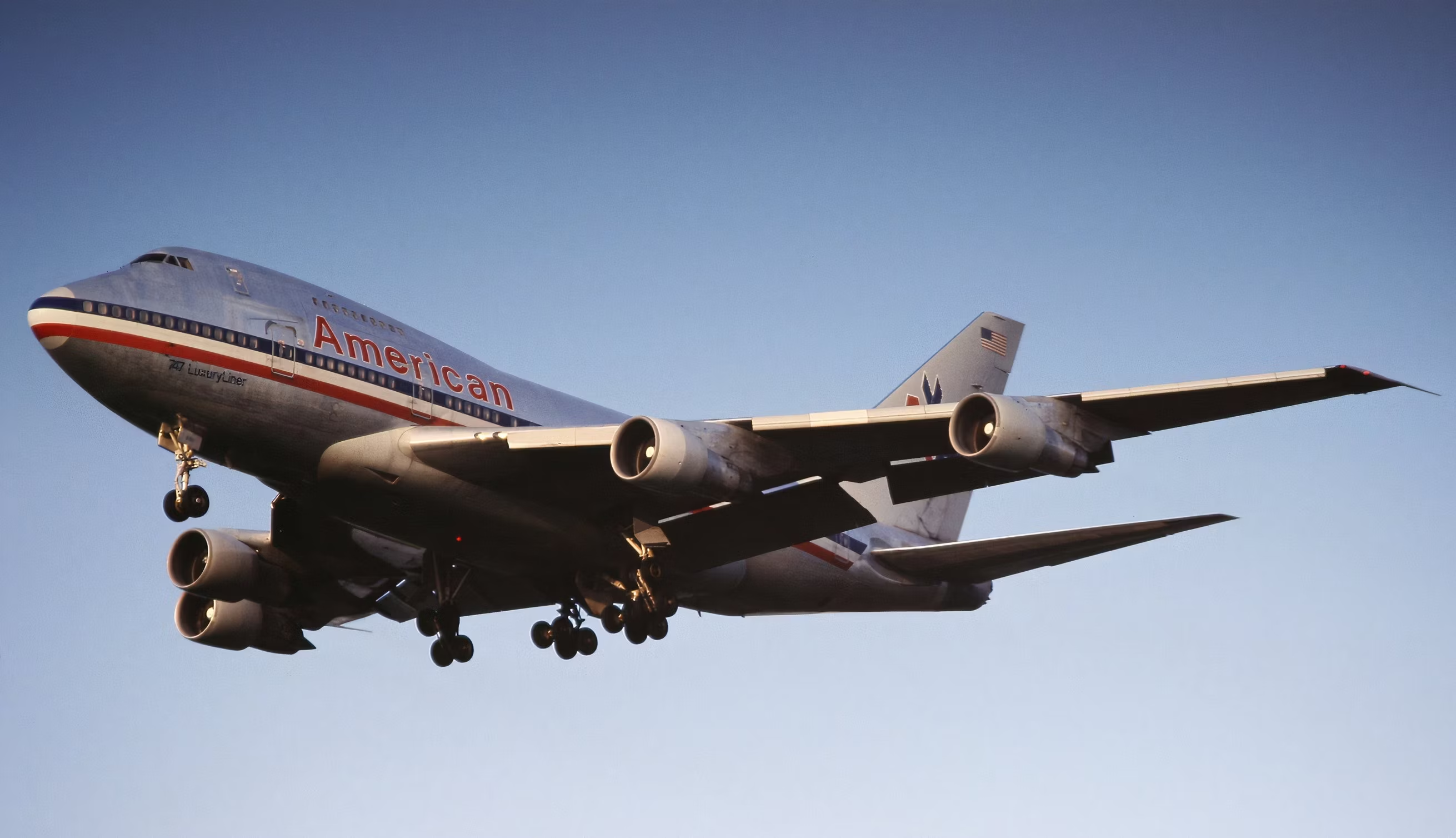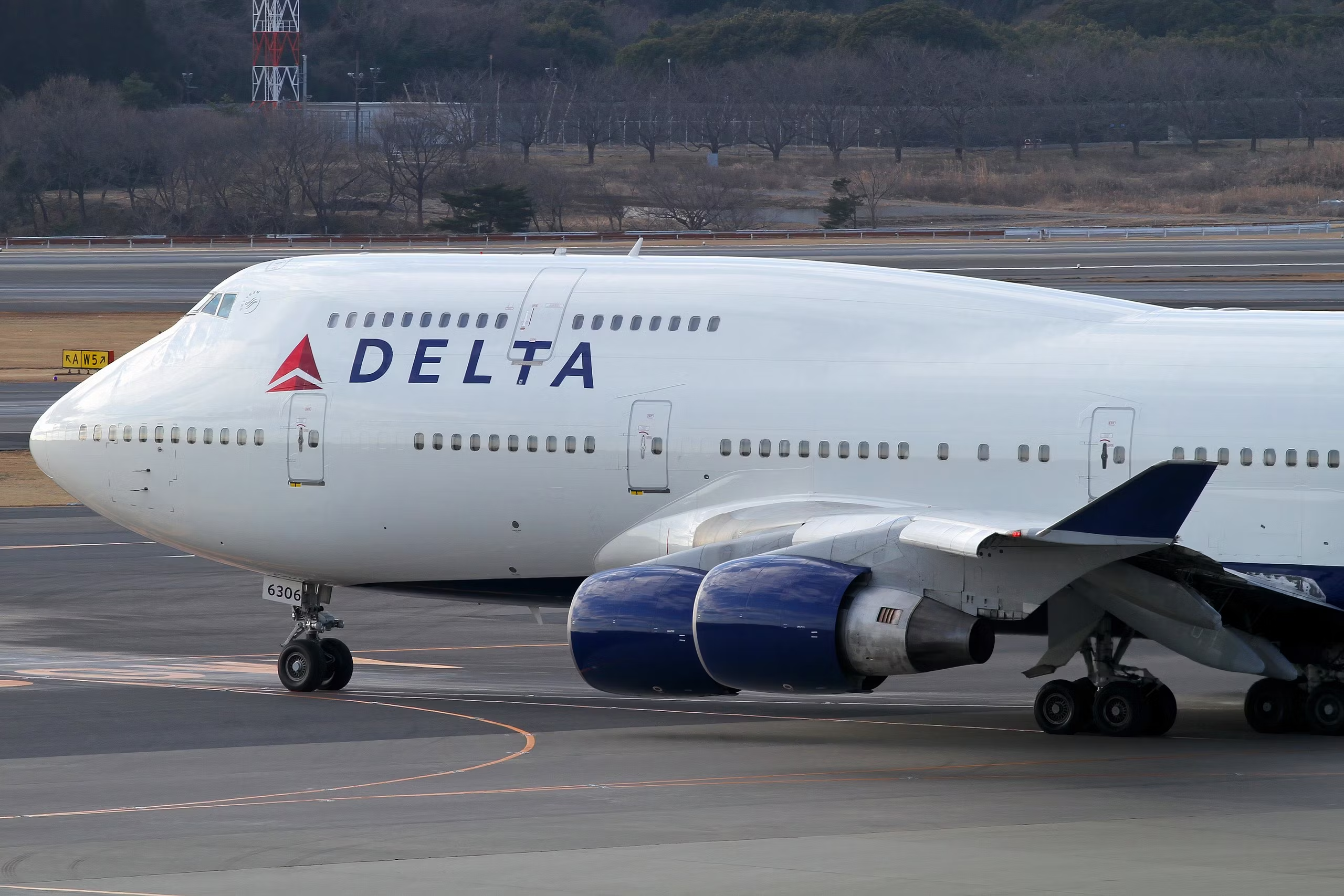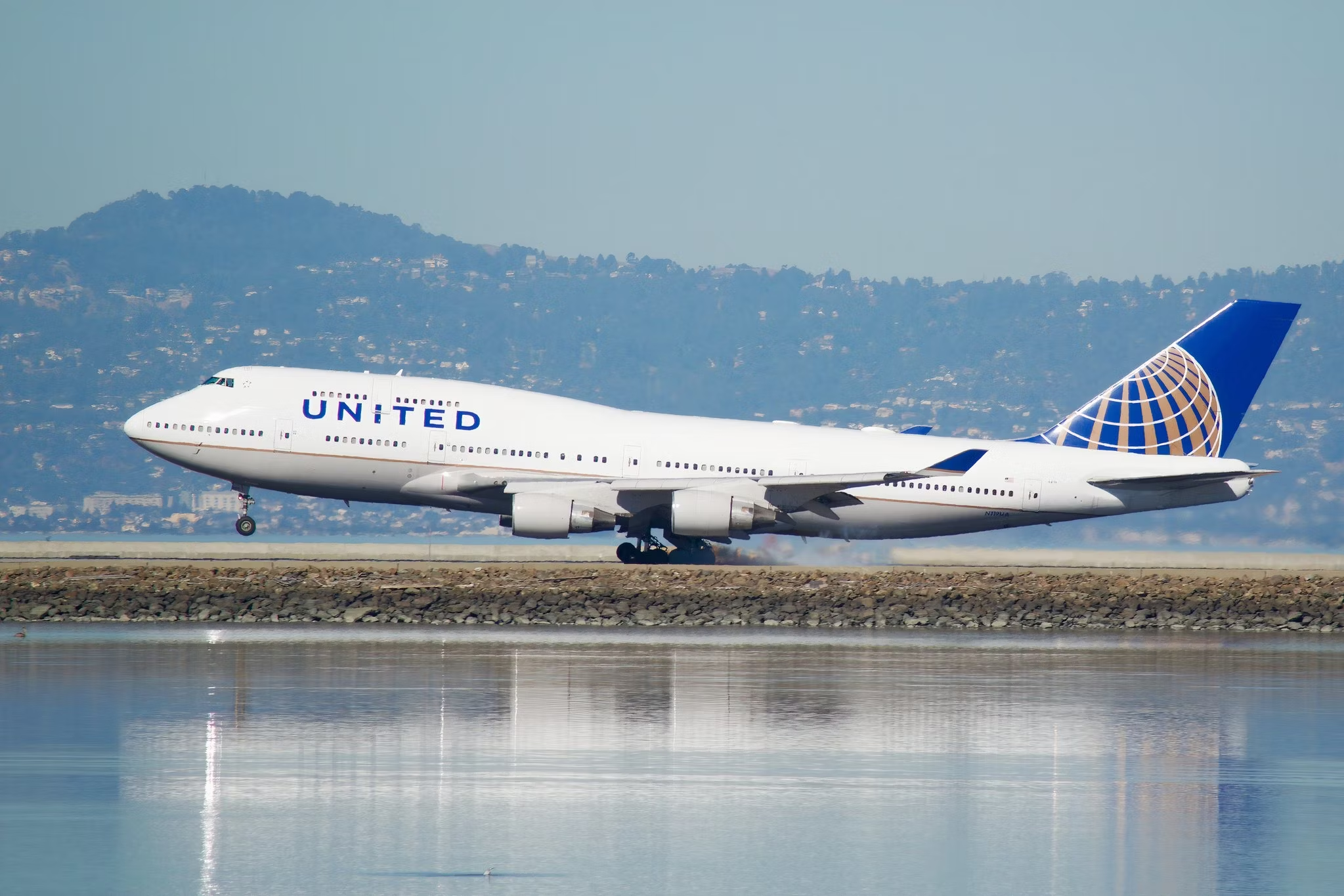As everyone knows, the United States of America has three large airlines, commonly called the “big three.” American Airlines, Delta Air Lines, and United Airlines are the nation’s largest airlines, both domestically and internationally.
This article will examine the Big Three’s former Boeing 747 fleet and the routes it deployed, the “Queen of the Skies.”
As the demand for air travel increased during the 1960s, Pan American Airways (Pan Am) Juan Trippe wanted a plane with two and a half times the capacity of the Boeing 707 so that he could reduce the cost per passenger by 30%. Trippe approached Boeing with the request, and the Seattle planemaker put Joe Sutter in charge of designing the jumbo jet.
Besides Pan Am, 26 other airlines were interested in the Boeing 747 and had representatives on hand to watch the first aircraft being rolled out of the Everett, Washington plant on September 30, 1968.
After a couple of years of delays due to problems during flight tests, the first Boeing 747 entered service with launch customer Pan Am on January 22, 1970.
American Airlines Boeing 747s
According to the aviation data and statistics websites ch-aviation and ATDB.aero, American Airlines received its first Boeing 747-100 on June 16, 1970. While waiting for its first two jumbo jets to arrive, American Airlines leased two Boeing 747-100s from Pan Am in February 1970. In total, between 1970 and retiring its last remaining Boeing 747 in 1984, American Airlines operated a total of 22 Boeing 747s comprising the following models:
- 12 x Boeing 747-100s
- 8 x Boeing 747-100Fs
- 2 x Boeing 747SPs
During the 1970s and 1980s, American Airlines and all other carriers had to contend with the fluctuating cost of aviation fuel, which increased ticket prices and made jets like the four-engine Boeing 747 expensive.
Unlike the other two large United States airlines, American Airlines never fully embraced the jumbo jet concept and used the three-engine McDonnell Douglas DC-10 for most of its long-haul international routes.
American Airlines placed its first Boeing 747 on its transcontinental route between John F. Kennedy International Airport (JFK) in New York and Los Angeles International Airport (LAX) in California. John F. Kennedy International Airport (JFK) in New York to San Francisco International Airport (SFO) in California was the next 747 route, followed by Chicago O’Hare International Airport (ORD) to Dallas Fort Worth International Airport (DFW).
With DFW being America’s primary hub, the world’s largest airline introduced the 747 for flights between DFW and what is now Daniel K. Inouye International Airport (HNL) in Honolulu, Hawaii.
When American Airlines bought its first of two Boeing 747SPs from TWA in 1986, the aircraft was immediately placed on its 13-hour, 10-minute flight between DFW and Narita International Airport (NRT) in Tokyo, Japan. American also used its Boeing 747s for flights between the United States and Europe.
American Airlines was the first of the big three to retire its 747s after the twin-engine Boeing 777 received its ETOPS 180 rating. The last American Boeing 747 flight took place in 1994, with the airline retiring all its 747s after less than 25 years of service.
Delta Air Lines Boeing 747s
According to the aviation data and statistics websites ch-aviation, and ATDB.aero, Delta Air Lines received its first Boeing 747-100 on October 30, 1970.
In total, between 1970 and retiring its last remaining Boeing 747-400 on January 3, 2018, after operating the Boeing 747 for 47 years. Of the three United States legacy carriers, Delta Air Lines was the second-largest operator of the Boeing 747, with a fleet of 38 747s made up of the following models:
- 5 x Boeing 747-100s
- 2 x Boeing 747-200Bs
- 4 x Boeing 747-200B(SCD)
- 6 x Boeing 747-200F(SCD)
- 19 x Boeing 747-400s
- 2 x Boeing 747-400Fs
Similar to American Airlines, the first Delta Air Lines Boeing 747 route was between the East and West coasts. On October 25, 1970, Delta flew its first Boeing 747 passenger flight between Hartsfield–Jackson Atlanta International Airport (ATL) and Los Angeles International Airport (LAX), with a stop at Dallas Fort Worth International Airport (DFW).
Delta was never a big fan of the Boeing 747, with the central core of its business being short and medium-haul routes, mainly in the Southeastern United States. Delta saw the more economical trijet Lockheed L-1011 TriStar as the aircraft of choice for its longer flights.
Between 1970 and 1977, Delta Boeing 747s flew between large American cities like Atlanta, Dallas, Los Angeles, Chicago, Detroit, and Miami and were deployed on Pan Am interchange flights between Washington Dulles International Airport (IAD) and London Heathrow Airport (LHR) in the United Kingdom.
Delta Air Lines, preferring the L-1011 over the Boeing 747, had removed all 747s from its fleet by 1977. However, things changed in April 2008 after Delta announced it was merging with Northwest Airlines. When the deal was done, the merger left Delta with 26 Boeing 747s, which it used mainly on routes to Asia and from its mini-hub at Narita International Airport (NRT) in Tokyo.
- LAX to NRT
- ATL to NRT
- MSP to NRT
- JFK to NRT
- DTW to ICN
- DTW to PVG
Delta used its Boeing 747-400s from Honolulu for flights to Tokyo, Manilla, and Taipei. Later, Delta began operating Boeing 747-400 flights between John F. Kennedy International Airport (JFK) and Ben Gurion International Airport (TLV) in Tel Aviv, Israel.
Delta rarely used its Boeing 747-400s on European routes but sometimes flew them to fellow SkyTeam KLM and Air France hubs at AMS and CDG. The last Delta Air Lines flight took place on December 18, 2017, when DL159A flew from Detroit to Seoul-Incheon.
United Airlines Boeing 747s
According to the aviation data and statistics websites ch-aviation, and ATDB.aero, United Airlines first commercial Boeing 747-100 flight took place on July 23, 1970, between San Francisco International Airport (SFO) and what is now called Daniel K. Inouye International Airport (HNL) in Honolulu, Hawaii.
During its 47 years of flying the Boeing 747, United Airlines was the largest operator of the aircraft in the United States, with 97 Boeing 747s made up of the following aircraft:
- 24 x Boeing 747-100s
- 10 x Boeing 747-200Bs
- 52 x Boeing 747-400s
- 11 x Boeing 747SPs
With its headquarters in Chicago, it’s not surprising that Chicago O’Hare International Airport (ORD) was a major United Airlines hub for the Boeing 747. While United also operated the Boeing 747 out of Washington Dulles, the airline’s most important hub was San Francisco International Airport (SFO).
From SFO, United Airlines flew its Boeing 747s to the following airports:
- Narita International Airport (NRT) in Tokyo
- Frankfurt International Airport (FRA) in Germany
- Hong Kong International Airport (HKG) in China
- Shanghai Pudong International Airport (PVG)
- Beijing Capital International Airport (PRK) in China
- Sydney Kingsford Smith Airport (SYD) in Australia
- Incheon International Airport (ICN) in Seoul, South Korea
Some flights that originated in San Francisco would fly to Tokyo and then on to Bangkok, Taipei, and Singapore. Likewise, some United flights to Hong Kong from SFO would continue to Ho Chi Minh City in Vietnam.
From ORD, United Airlines flew its Boeing 747s to the following airports:
- Narita International Airport (NRT) in Tokyo
- Hong Kong International Airport (HKG) in China
From IAD, United Airlines flew its Boeing 747s to the following airport:
- Frankfurt International Airport (FRA) in Germany
- London Heathrow Airport (LHR) in the United Kingdom
- Beijing Capital International Airport (PRK) in China
United Airlines retired its final Boeing 747, flying between San Francisco and Honolulu, the same route it had first flown the Queen of the Skies on some 47 years earlier. United Flight UA747 departed SFO half an hour late on November 17, 2017. In keeping with a retro theme to honor the airline’s first flight, the cabin crew wore 1970s uniforms.




